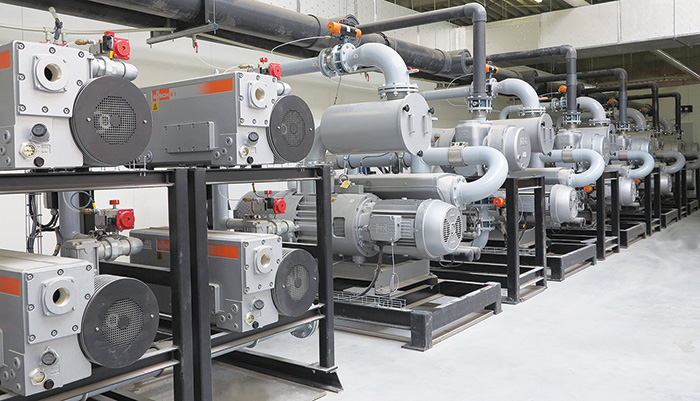Pini Polonia, a leading meat-processing company, operates three production facilities in Kutno, Poland, that together process 1,000 pigs per hour. The newest facility was commissioned in April 2015 and manufactures cooked ham, salami and other sliced meat products. The new site is equipped with the latest technology, uses the best raw materials and applies stringent hygiene standards to produce quality meat specialities. Pini Polonia is part of the Pini Group, which operates production facilities in Italy and Hungary. The new site is located close to the existing abattoir and processing centers in Kutno and reached maximum production output at the end of 2015, when 130 tons of cooked ham and 60 tons of salami were produced in a two-shift system. During the startup phase, the facility employed 150 staff members. In January 2016, that number climbed to 850. As part of the company’s modern equipment lineup, Pini Polonia has used a centralized vacuum system for all packaging lines since production commenced.
 Image 1. The centralized vacuum system at a Pini Polonia facility (Images courtesy of Busch Vacuum Pumps and Systems)
Image 1. The centralized vacuum system at a Pini Polonia facility (Images courtesy of Busch Vacuum Pumps and Systems).jpg) Image 2. Packaging line for sliced cooked ham at a Pini Polonia facility
Image 2. Packaging line for sliced cooked ham at a Pini Polonia facility
